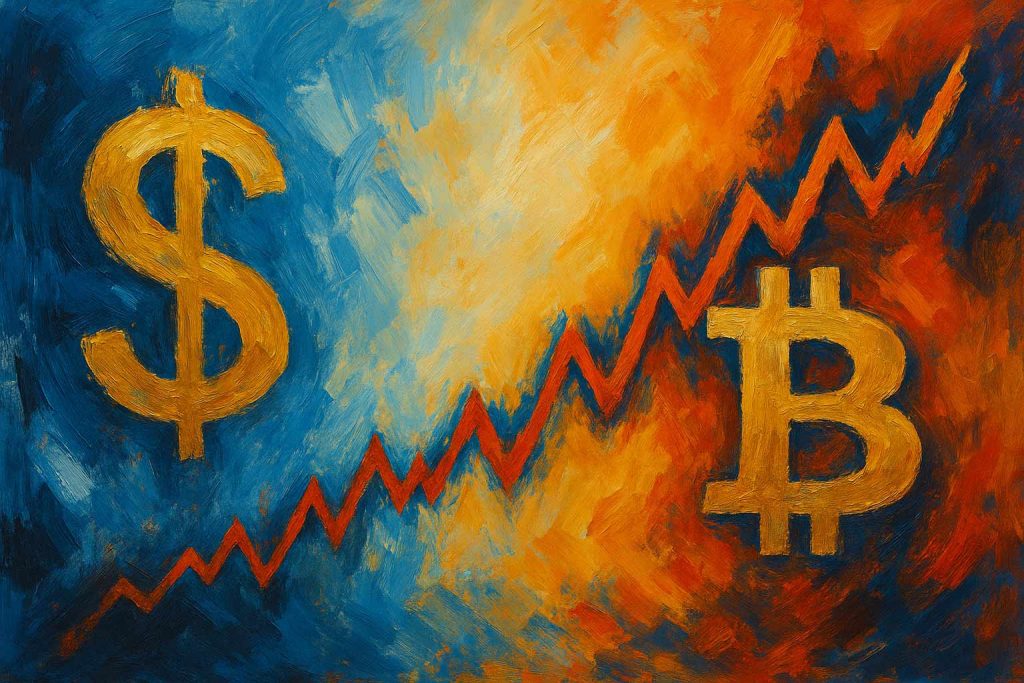The Age of Assumed Stability
We often treat the dollar, the pound, or the euro as if they are natural laws — fixed, unquestionable measures of value. These currencies structure our salaries, savings, debt, and dreams. But few stop to consider what holds that value together. Spoiler: it’s not gold, and it’s certainly not code.
It’s trust.
Fiat currencies are sustained by faith. Faith that central banks won’t print too much. Faith that inflation won’t eat your paycheck. Faith that institutions will act responsibly. This is the social contract modern finance relies on: a belief that the people in charge won’t fail us.
But belief is brittle.
Back in the 18th century, philosopher David Hume asked a now-timeless question: Is society held together by law or merely by custom? Apply that to money today: do currencies hold their value because they are legal tender? Or simply because we still believe they do?
In 2009, an anonymous figure named Satoshi Nakamoto published a white paper that called the bluff. Bitcoin wasn’t just a technical blueprint. It was a philosophical revolt. “The root problem with conventional currency is all the trust that’s required to make it work,” Nakamoto wrote. “The central bank must be trusted not to debase the currency, but the history of fiat currencies is full of breaches of that trust.”
In Nakamoto’s worldview, trust isn’t a social good. It’s a systemic vulnerability.
The Fault Lines in Fiat
To trust a central bank is to assume that it will never print money recklessly. That it will never let inflation run wild. That it will act in the public interest, not political expediency. But history tells a different story. In the 1920s, hyperinflation in Weimar Germany made money worthless almost overnight. A loaf of bread went from 250 marks to 200 billion marks within two years. In Zimbabwe, hyperinflation reached 79.6 billion percent in 2008. Even more recently, Argentina defaulted on its sovereign debt for the ninth time in 2020.
In so-called “stable” economies, breaches of trust happen more quietly. In 1971, President Nixon decoupled the U.S. dollar from gold effectively ending the Bretton Woods system and beginning an era of unchecked monetary expansion. After the 2008 financial crisis, trillions of dollars were created to bail out banks deemed “too big to fail.” By 2022, over 40% of all U.S. dollars in circulation had been printed since 2020.
Was that stability? Or just staged calm?
As economist Friedrich Hayek argued in The Denationalisation of Money (1976), “Government control of money is the root cause of inflation and economic instability.” Nakamoto’s vision echoed this critique — not with ideology, but with code.
Volatility Isn’t Chaos — It’s Transparency
Crypto volatility is often painted as its Achilles’ heel. “How can you trust a currency that loses 10% of its value in a day?” ask the sceptics. But this misunderstands the role of volatility in a decentralised system. In traditional markets, volatility is managed by central banks, institutional investors, and backroom deals. Interest rates are lowered. Liquidity is injected. Markets are soothed. But crypto doesn’t have a Federal Reserve. There’s no emergency backstop. What you see is what the market feels — in real time, on-chain, for everyone to verify.
Volatility in crypto is not a failure — it’s the honest consequence of removing the filters. It reflects market psychology in its rawest form: fear, hope, speculation, greed. Every emotion is priced in. To borrow from Nassim Nicholas Taleb, crypto markets are “antifragile” — they do not collapse under stress but evolve from it. Unlike fiat, they don’t suppress volatility, they metabolise it.
The Silent Volatility of Fiat
Now consider fiat currencies again. A 2% annual inflation rate sounds benign perhaps even healthy. But over 10 years, that’s a loss of nearly 20% in purchasing power. And that’s assuming things don’t spiral, as they often do. But this erosion happens slowly. It’s not on the front page of the Financial Times. It’s the frog-boiling-in-water problem. So long as inflation is predictable or technically managed – we accept it. Even when it eats away at wages, pensions, and savings.
In contrast, when Bitcoin drops 15% in a week, the headlines scream. Yet inflation of similar proportions in a fiat system is met with resigned silence. So, ask yourself: is slow, silent debasement better than fast, transparent fluctuation? Or is crypto’s volatility more honest because it can’t be hidden behind monetary jargon and institutional opacity?
Redefining Trust Through Protocols
Web3 does not eliminate the need for trust. Instead, it redefines where trust is placed.
Instead of trusting a central bank, you trust open-source code.
Instead of trusting a government, you trust decentralised consensus.
Instead of trusting promises, you trust protocols.
Instead of trusting a government, you trust decentralised consensus.
Instead of trusting promises, you trust protocols.
Yes, it’s less forgiving. Lose your private key, and your funds are gone. But that’s the trade-off for a system that doesn’t lie, doesn’t favour insiders, and doesn’t change the rules on a whim. This mirrors Ivan Illich’s idea of “convivial tools” — technologies that empower users without demanding subordination. Web3 isn’t about rejecting systems. It’s about making sure no one person controls them.
It’s not comfort. It’s clarity.
Volatility as the Price of Sovereignty
Let’s be blunt: decentralised systems are not for the faint-hearted. There are no guarantees. No monetary stimulus. No lender of last resort. When the market crashes, it crashes. You’re on your own with your wallet, your private key, and your risk appetite. But maybe that’s the point. Crypto isn’t for people who want to be saved. It’s for people who want to choose the terms of their exposure.
Yes, volatility is scary. But so is the idea that your currency’s fate lies in the hands of a few unelected central bankers with opaque mandates and political constraints. Volatility, then, is the price of sovereignty. The price of truth – unfiltered, unpredictable, and programmable. The cost of escaping a system that was never truly stable to begin with.
Conclusion: Toward a New Kind of Stability
We’ve been taught that stability is the highest virtue in money. But what if that “stability” has been artificially propped up at the expense of transparency, accountability, and adaptability?
Satoshi Nakamoto didn’t design Bitcoin to be calm. He designed it to be fair. And fairness, in a world of rigged systems and hidden costs, is often loud, messy, and volatile. So, let’s stop asking why crypto is so volatile. Let’s start asking why fiat has been allowed to pretend it isn’t. Because in this new world, trust isn’t given. It’s coded, earned and finally, optional.
By Pritish Beesooa Head of Blockchain and Web3











